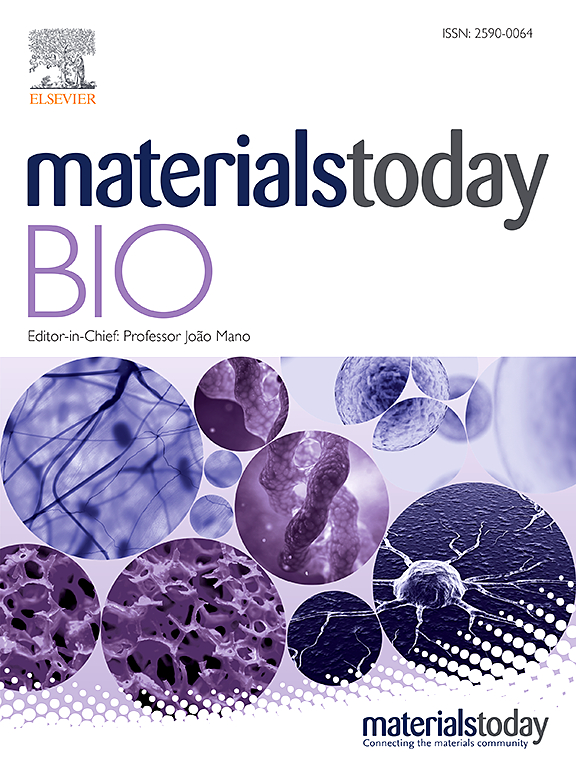DON-Apt19S bioactive scaffold transplantation promotes in situ spinal cord repair in rats with transected spinal cord injury by effectively recruiting endogenous neural stem cells and mesenchymal stem cells
IF 8.7
1区 医学
Q1 ENGINEERING, BIOMEDICAL
引用次数: 0
Abstract
The spinal cord's limited regeneration is attributed to the scarcity of endogenous stem cells and a poor post-injury microenvironment in adult mammals. To overcome these challenges, we transplanted a DNA aptamer 19S (Apt19S) sustained-release decellularized optic nerve (DON) scaffold (DON-A) into completely transected spinal cord injury (SCI) site in rats and investigated its effect on endogenous stem cell recruitment and differentiation, which subsequently contributed to in situ SCI repair. It has been demonstrated that Apt19S specifically binds to the membrane receptor alkaline phosphatase highly expressed on neural stem cells (NSCs) and mesenchymal stem cells (MSCs), and our study further proved that Apt19S can simultaneously recruit endogenous NSCs and MSCs to the lesion of SCI. In our study, the DON-A promoted stem cell proliferation in the early stage of the injury, followed by the rapid neurogenesis through NSCs and revascularization via MSCs. Synaptic connections between corticospinal tracts and calcitonin gene-related peptide positive nerve fibers with newborn neurons confirmed the formation of endogenous neuronal relays at the injury site, which improved the rats' motor and sensory functions. This study offers a new strategy for recruiting both NSCs and MSCs to synergistically overcome low spinal cord self-repair ability, holding a high potential for clinical translation.

DON-Apt19S 生物活性支架移植通过有效招募内源性神经干细胞和间充质干细胞,促进脊髓横断损伤大鼠的原位脊髓修复
本文章由计算机程序翻译,如有差异,请以英文原文为准。
求助全文
约1分钟内获得全文
求助全文
来源期刊

Materials Today Bio
Multiple-
CiteScore
8.30
自引率
4.90%
发文量
303
审稿时长
30 days
期刊介绍:
Materials Today Bio is a multidisciplinary journal that specializes in the intersection between biology and materials science, chemistry, physics, engineering, and medicine. It covers various aspects such as the design and assembly of new structures, their interaction with biological systems, functionalization, bioimaging, therapies, and diagnostics in healthcare. The journal aims to showcase the most significant advancements and discoveries in this field. As part of the Materials Today family, Materials Today Bio provides rigorous peer review, quick decision-making, and high visibility for authors. It is indexed in Scopus, PubMed Central, Emerging Sources, Citation Index (ESCI), and Directory of Open Access Journals (DOAJ).
 求助内容:
求助内容: 应助结果提醒方式:
应助结果提醒方式:


